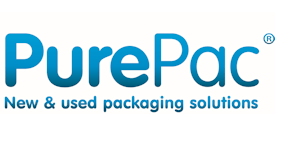this is the question I get asked most about Plastic Packaging Tax (PPT)
Since my last post on PPT, I’ve been asked lots of questions regarding what packaging items will be liable for the new tax from 1st April 2022. The most common one is – are non-UN containers exempt? The simple answer is, everything that is predominantly plastic by weight and is made wholly from virgin polymer (whether you purchase it unfilled or filled) will be liable for PPT. All containers whether UN approved or non-UN will have the tax levied against them.
The list of items impacted is endless, including products you might not even consider like packaging tape, sandwich bags and food wrappers. As well as the individual packaging, PPT applies to components, for example, a cap, lid, label, valve or seal.
Only if your packaging item has 30% or more recycled materials will it be exempt. Even if exempt, if you are the manufacturer or the importer of that exempt item, you will still need to register for PTT to provide the relevant details for the exemption.
There are some exceptions to the rule:
- Long-term packaging – a good example would be a case for your glasses
- Packaging which is an integral part of the goods – for example, an ink cartridge
- Presentation of goods – an example is a display stand or shelving in the retail sector
There are also some exemptions which we spoke about last time including transport packaging and packaging with immediate contact with human medicines, as well as non-packaging use items like the film used to protect a phone or TV screen.
In the case of IBCs and drums, manufacturers Schutz and Mauser are working on their product ranges which will achieve the required 30% recycled materials. However, UN approvals are pending, and detailed spec sheets and prices haven’t been issued yet.
The bottom line is the new tax will impact everyone, whether you are buying directly or indirectly, as the cost of the PTT will simply be passed through the supply chain eventually ending up with consumer prices rising.
These updates further clarify what types of plastic packaging are included. You’ll also find examples on the GOV.UK website. Here are the latest guides on LinkedIn – ‘Check if your plastic packaging is in scope‘ and ‘Check if you need to register and are liable‘.





Recent Comments